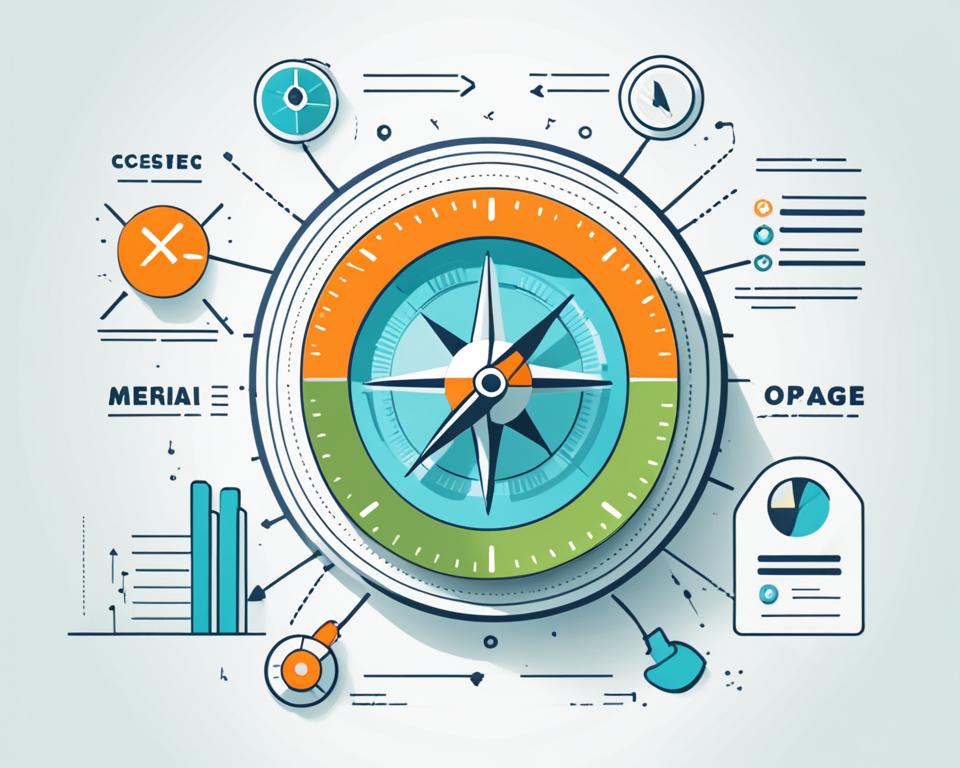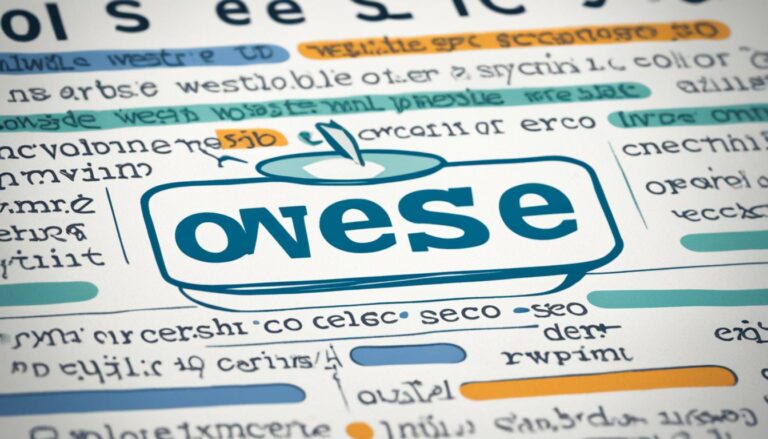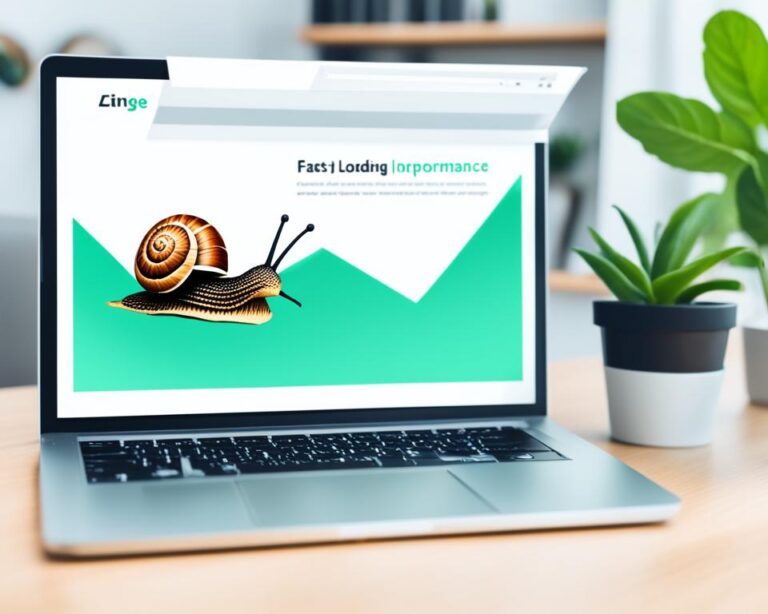Did you know that on-page optimization can significantly enhance your website’s ranking and drive more organic traffic? You may be missing out on a powerful SEO technique that could take your website to the next level.
Here’s an unexpected fact: websites that implement on-page optimization techniques experience an average increase in organic traffic by over 20%. Imagine the impact that could have on your online visibility and business success!
On-page optimization, also known as on-site SEO, involves optimizing various elements on your website to improve its search engine ranking and enhance user experience. From meta tags and keyword density to content optimization and internal linking, every detail matters when it comes to on-page optimization.
In this article, we’ll delve into the world of on-page SEO best practices and share with you the secrets to boosting your site’s SEO power. Get ready to unlock the potential of your website and drive more organic traffic than ever before!
Key Takeaways:
- On-page optimization can significantly improve your website’s search engine ranking.
- Implementing on-page SEO techniques can increase organic traffic by over 20%.
- Meta tags, keyword density, content optimization, and internal linking are crucial elements of on-page optimization.
- By optimizing your website’s on-page SEO, you can enhance user experience and drive more organic traffic.
- Stay tuned for practical tips on how to enhance your website’s on-page optimization.
What Is On-Page SEO?
On-page SEO, also called on-site SEO, refers to the process of optimizing webpages and their content to improve their visibility in search engines and provide a better user experience. It involves various tasks such as optimizing for search intent, title tags, internal links, and URLs. By implementing on-page SEO techniques, you can increase your website’s chances of ranking higher in search engine results, driving more organic traffic to your site.
Search engines analyze various aspects of your webpages to determine their relevance and usefulness to users. On-page SEO helps you optimize these elements to align with what search engines are looking for, increasing your chances of ranking well.
When you optimize your webpages, you make it easier for search engines to understand your content and deliver it to the right users. Additionally, you enhance the user experience, making it more enjoyable and valuable for your visitors.
On-page SEO is an essential part of any comprehensive SEO strategy. By focusing on optimizing your webpages, you can maximize your website’s visibility and attract organic traffic from search engines.
“On-page SEO is crucial because it helps you optimize webpages to align with search engines’ requirements and provide a better user experience.”
On-Page SEO vs. Off-Page SEO
When it comes to optimizing your website for search engines, there are two main strategies you can employ: on-page SEO and off-page SEO. While both are essential for improving your website’s visibility and driving organic traffic, they focus on different aspects of optimization.
On-page SEO involves optimizing the elements within a webpage to improve its search engine rankings. This includes optimizing meta tags, keyword usage, content, images, and internal linking. By optimizing your website internally, you have direct control over how search engines perceive the relevance and quality of your content.
Off-page SEO, on the other hand, involves optimizing factors outside of your website that can influence its visibility and authority. This includes building high-quality backlinks from authoritative websites, establishing a strong presence on social media platforms, and leveraging public relations (PR) efforts to increase brand awareness and credibility.
Both on-page and off-page SEO are crucial components of a successful SEO strategy. However, on-page SEO provides more control as you can directly optimize your website’s content and structure to align with search engine algorithms. On the other hand, off-page SEO focuses on external factors that can enhance your website’s authority and reputation.
To summarize, on-page SEO involves optimizing your website internally, while off-page SEO focuses on optimizing external factors such as backlinks, social media, and PR. By implementing both strategies effectively, you can maximize your website’s visibility, authority, and organic traffic.
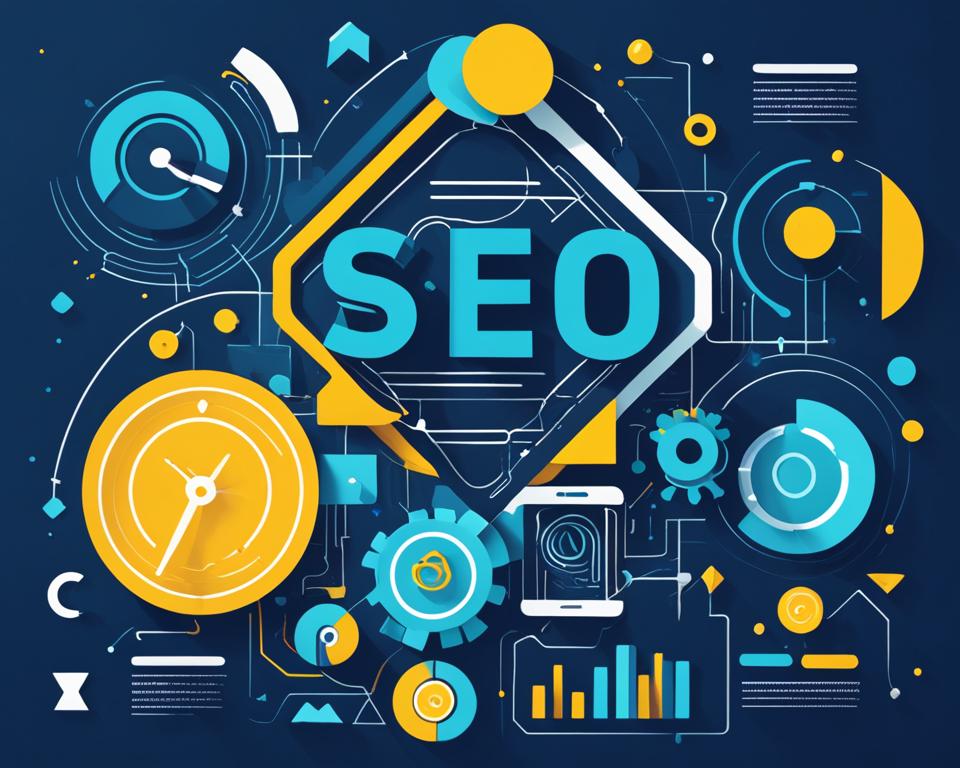
| Aspect | On-Page SEO | Off-Page SEO |
|---|---|---|
| Definition | Optimizing elements within a webpage | Optimizing factors outside of your website |
| Focus | Website content and structure | Backlinks, social media, PR |
| Control | Direct control over website optimization | Control over external factors |
| Main Techniques | Meta tags, keyword usage, content optimization Internal linking, image optimization |
Backlink building Social media presence PR strategies |
| Benefits | Improved search engine rankings Enhanced user experience |
Increased visibility and authority Stronger brand reputation |
Why Is On-Page SEO Important?
On-page SEO plays a crucial role in driving organic traffic to your website and improving your search engine rankings. It focuses on optimizing various elements within your webpages to enhance their relevance and usability for both search engines and users.
Search engines like Google utilize on-page SEO signals to determine the relevance of a webpage to a user’s search query. By implementing on-page SEO best practices, you can increase the visibility of your content and ensure that it meets the needs of your target audience.
The Google algorithm prioritizes user experience, meaning that websites with user-friendly designs and valuable, people-first content are more likely to rank higher in search results. It’s essential to create relevant and informative content that matches user intent and provides a seamless user experience.
By optimizing your on-page SEO, you make it easier for search engines to understand your content and deliver it to the right audience. This, in turn, improves the chances of attracting organic traffic to your website.
Remember, on-page SEO is not just about keyword optimization. It also involves optimizing factors such as meta tags, headings, URLs, and internal linking to enhance the overall user experience.
Optimizing your website for on-page SEO ensures that your content is more likely to be found by your target audience, driving increased organic traffic and improving your website’s visibility in search engine results pages.
Next, let’s explore nine key on-page SEO techniques that you can implement to boost your website’s SEO power and drive more organic traffic to your site.
9 On-Page SEO Techniques for Your Website
In order to improve your website’s SEO and increase organic traffic, it is important to implement effective on-page optimization techniques. Here are nine key techniques you can utilize:
- Unique Content: Create high-quality and original content that provides value to your target audience.
- Target Keywords: Conduct keyword research to identify relevant and high-ranking keywords to optimize your content.
- Title Tags: Optimize your title tags by including your target keywords and making them compelling for both search engines and users.
- Meta Descriptions: Write engaging meta descriptions that accurately summarize your content and entice users to click.
- Headings and Subheadings: Structure your content with headings and subheadings to enhance readability and keyword optimization.
- URLs: Create clean and keyword-rich URLs that provide context to both users and search engines.
- Internal Links: Strategically link relevant pages within your website to improve navigation and enhance SEO.
- External Links: Include authoritative external links that provide additional value and credibility to your content.
- Images: Optimize your images by using descriptive alt tags and compressing them to improve page load speed.
By implementing these on-page optimization techniques, you can enhance your website’s visibility, improve search engine rankings, and drive more organic traffic.
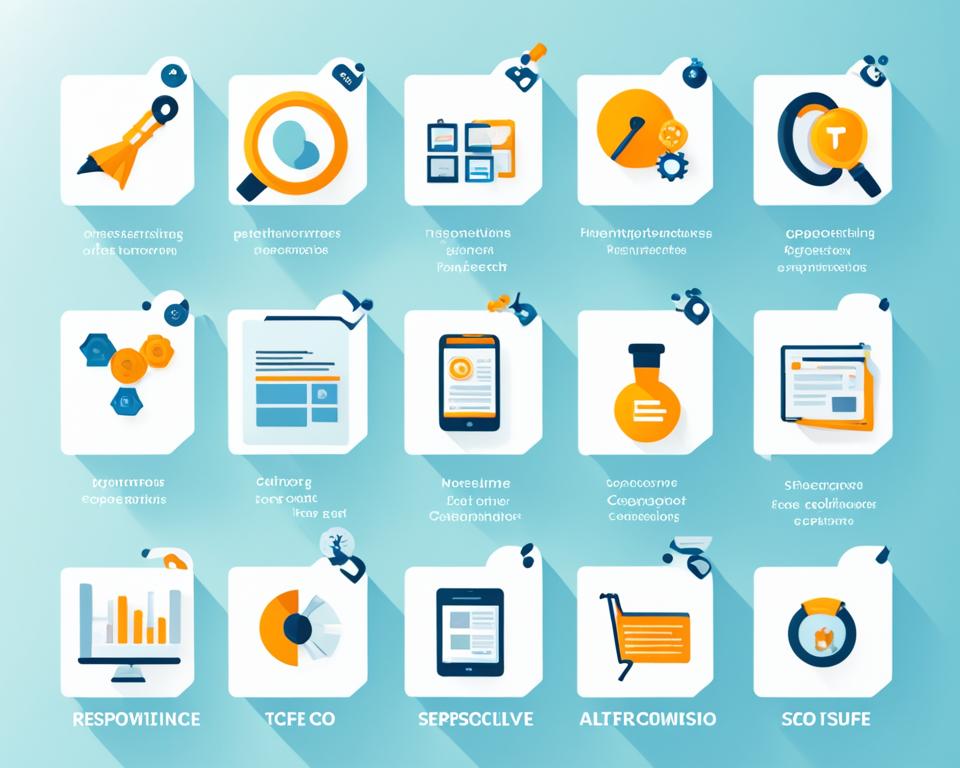
Write Unique, Helpful Content
Writing high-quality, valuable content is an essential aspect of on-page SEO. To create content that resonates with your audience and search engines, it’s crucial to start with thorough keyword research. By analyzing search volume and keyword difficulty, you can identify relevant topics and target keywords that have a better chance of ranking.
When conducting keyword research, consider both high search volume keywords and long-tail keywords. High search volume keywords indicate popular search queries, while long-tail keywords are more specific and often have lower competition. By targeting long-tail keywords with lower keyword difficulty, you can optimize your content for better visibility in search engine results.
Once you have identified your target keywords, it’s important to incorporate them naturally into your content. Avoid keyword stuffing, as it may result in a poor user experience and can negatively impact your rankings. Instead, focus on addressing user queries fully and providing unique value that sets your content apart from competitors.
Remember that user intent is key. Your content should fully meet the needs and expectations of your target audience, answering their questions and providing valuable insights or solutions. By consistently delivering high-quality, helpful content, you can establish your website as a trusted resource and drive more organic traffic.
Place Target Keywords Strategically
Strategic placement of target keywords within your content is crucial for effective on-page SEO. By strategically placing your target keywords in key areas, such as the H1 tag, first paragraph, and subheadings, you provide valuable context to both search engines and users, improving the visibility and relevance of your page in search engine results.
However, it’s important to avoid keyword stuffing. Instead, focus on ensuring that the placement of keywords feels natural and organic within the content. This will help search engines understand the topic of your page and provide a better user experience.
To optimize your H1 tag, consider using your target keyword within the heading to immediately indicate the main topic of the page. This provides clear relevance to search engines and helps users understand what your page is about.
The first paragraph of your content also plays a significant role in on-page SEO. Including your target keyword early on in the first paragraph helps search engines quickly identify the main topic, improving the visibility of your page in search results.
Subheadings, such as H2 and H3 tags, provide another opportunity to strategically place target keywords. By incorporating relevant keywords in subheadings, you further establish the relevance and structure of your content, making it easier for search engines and users to navigate and understand your page.
Strategically placing target keywords in key areas of your content helps search engines understand the relevance and structure of your page. This improved understanding leads to better visibility and rank in search engine results.
By carefully considering the placement of your target keywords, you can enhance the on-page SEO of your website, maximizing its potential to attract organic traffic and improve search engine rankings.
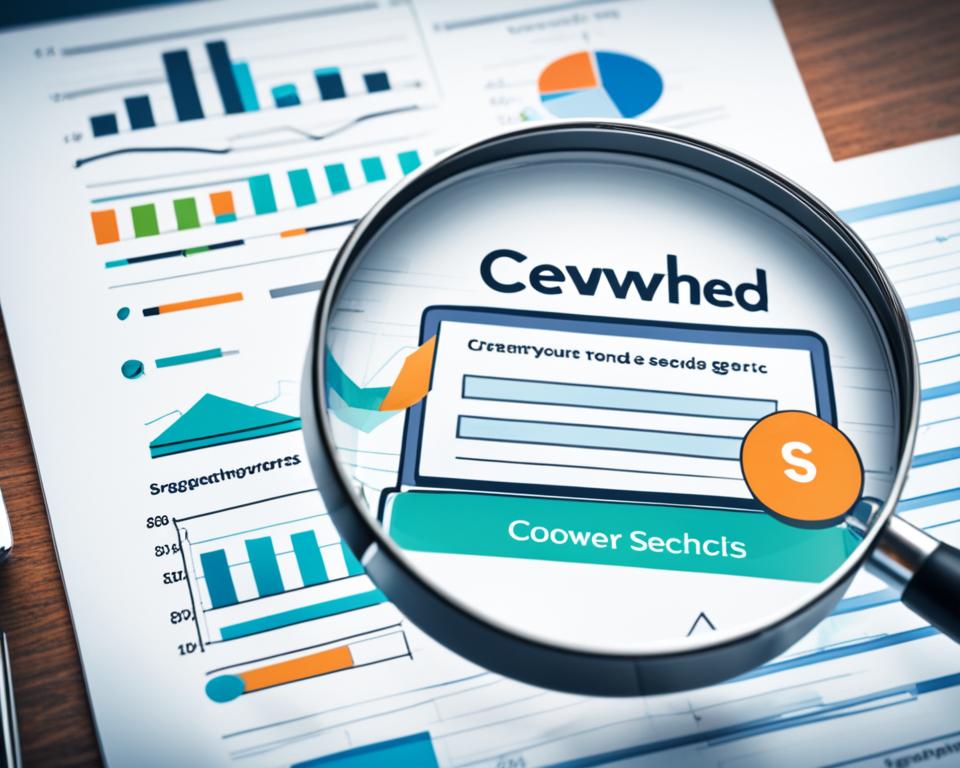
| Benefits of Strategic Keyword Placement | Best Practices |
|---|---|
| Improved visibility and relevance in search engine results | Avoid keyword stuffing and ensure natural placement |
| Enhanced understanding of the main topic and structure of your page by search engines | Optimize H1 tag, first paragraph, and subheadings |
| Better user experience and navigation through clear and organized content | Incorporate relevant keywords in subheadings |
Write Click-Worthy Meta Descriptions
Writing click-worthy meta descriptions is essential for enticing users to click on your page in search results. A well-crafted meta description can significantly impact your click-through rates and attract more organic traffic to your website.
| Key Factors for Effective Meta Descriptions |
|---|
| Consider the character limit, especially on mobile devices |
| Keep the description concise and relevant |
| Include your target keyword to match user intent and improve visibility |
| Use active voice to make the description stand out visually |
| Add a compelling call to action to motivate users to click |
When crafting your meta descriptions, keep in mind that they serve as a brief summary of your webpage’s content. They should provide users with a clear understanding of what they can expect when visiting your page. By following these best practices, you can optimize your meta descriptions and improve your click-through rates.
Create Concise and Relevant Descriptions
Meta descriptions should be concise and to the point, as users are more likely to read and engage with shorter descriptions. Consider the character limit, with Google typically displaying around 155-160 characters for desktop and 120-130 characters for mobile devices.
For example, if your website offers photography services, a concise and relevant meta description could be: “Professional photography services for weddings, events, and portraits. Book a session now for stunning and memorable photos!”
Incorporate Target Keywords and Active Voice
Include your target keyword within your meta description to align with user search intent. This helps search engines identify the relevance of your page to the user’s query. Additionally, using active voice can make your description more compelling and engaging.
For example, if your webpage is about healthy smoothie recipes, an effective meta description could be: “Discover delicious and nutritious smoothie recipes packed with vitamins and antioxidants. Start your day with a refreshing boost of energy!”
Add a Compelling Call to Action
A call to action (CTA) encourages users to take a specific action, such as clicking on your webpage. Including a CTA in your meta description can increase the chances of users engaging with your content.
For example, if you’re promoting an online marketing course, a meta description with a strong CTA could be: “Learn proven strategies and boost your online presence with our comprehensive marketing course. Enroll today and take your business to the next level!”
By writing click-worthy meta descriptions that consider character limits, incorporate target keywords, use active voice, and include compelling calls to action, you can optimize your meta tags and attract more organic traffic to your website. Remember to regularly review and update your meta descriptions to align with evolving user needs and search trends.
Conclusion
On-page optimization is a critical aspect of boosting your website’s SEO power and improving its visibility in search engine results. By implementing effective on-page SEO techniques such as optimizing meta tags, keyword usage, content, and internal linking, you can enhance your website’s user experience and attract more organic traffic.
Creating high-quality, relevant content that aligns with user intent is key to maximizing the impact of on-page optimization. By focusing on delivering value to your target audience, you can ensure that your website provides a seamless user experience and meets the needs of your visitors.
Continuously optimizing your on-page SEO is essential for maintaining and improving your website’s search engine visibility. Regularly reviewing and updating your meta tags, keywords, and content can ensure that your website remains optimized and in tune with evolving search engine algorithms, boosting your chances of reaching a wider audience and driving more organic traffic.
In summary, on-page optimization is a fundamental strategy to enhance your website’s SEO power, increase its visibility, and provide an exceptional user experience. By implementing best practices and consistently optimizing your on-page elements, you can improve your website’s performance, attract more visitors, and ultimately achieve your online goals.

